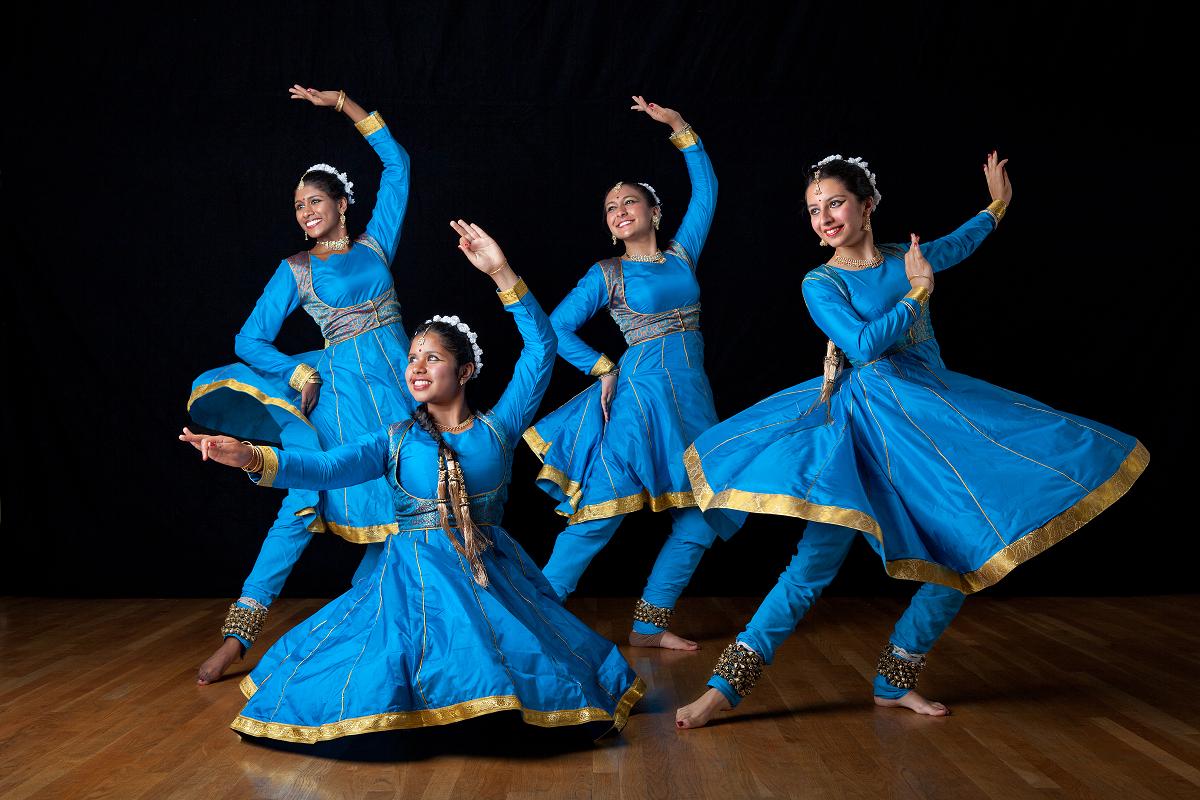Kathak : It has its root in katha-story. A band of story tellers who are attached to temples in North India, narrated stories from epics. Later, they added mime and gesture of their recitation. The next stage in evolution came in the 15th and 16th centuries A.D. with the popularization of the Radha-Krishna legend . With the advent of the muslim rule, It was taken out from the temples of to the courts Jaipur, Lucknow and Benaras became the centers. While Jaipur gave predominance took pure dance with emphasis on rhythm, The Lucknow drifted into erotics.
Benaras is also stuck to pure dance but it provided for the sensuous aspect by delineating episodes from Radha-Krishna legend. The parton kinf of the Lucknow style was Wajid Ali Shah who spent extravagantly on art. The place of women in Kathak was of a different order. They were known as nach-walis who adorned the courts of Mughals. Apart from this, they were used for entertainment of the pleasure seeking rulers and their fawning toadies. Eventually they came to be categorised as women of easy virtue. The Kathak dance goes through a regular format mostly concentrating on rhythm variously called Tatkar, Paltas, Thoras, Amad and Parans.Binda Din Maharaj, Kalkadin, Dachan Maharaj, Gopi Krishna and Birju Maharaj are but a few maestros in the line.
Costume
The costumes and themes of Kathak are very similar to those seen in Mughal miniature paintings. Traditionally, the dancers used to wear a ghaghara (long skirt), choli (blouse) and a veil. Over the years, this costume has given way to the churidar pajama and angarka.
Kathak Performance
A Kathak performance usually has the following common elements. It begins with that, which sets the tone for the entire presentation and which is characterised by graceful movements of eyes, eyebrows, neck, chest and shoulders, and music played at a medium tempo in a relaxed mood. Tatkar involving only foot-work follows that. The succeeding tohras embrace some of the most intricate and spontaneous movements. Paranas, or pure dance-steps set to instrumental scores, also form a part of this stage.
Kathak Music/ Rhythm
Kathak music begins with the “lahara” which is played by the sarangi, sitar, flute, or sarod and played as accompaniment for the abstract or “nritta” portion of the dance. The word “lahara” is a derivative of the word lahar, meaning current of a river or a stream. In Sanskrit and Hindi, it means a pleasurable tune. The current of lahara takes the dance along with its rhythm, and so the dance is intensely saturated with rhythm. It can be composed in as many talas (rhythmic cycles) the artist would use. The repetition of one strain of lahara in one avarti or cycle or from sum to sum (starting point) is purposely done as the abstract is mainly time measurement and it helps to the correctness of time. So lahara is the examining balance of the rhythm of abstract or “nritta.” Lahara is the speed or tempo of rhythm. The technique of dance is regulated by lahara. Each pattern in rhythm is rendered mainly in three tempos vilambit (slow), madhya (medium) and drut (fast).The performers efficiency in technique is marked the artist’s dexterity in rendering any rhythmic pattern the fastest tempo called drut.
The rhythm of kathak dance is played in cycles of beats according a particular number of beats or matras. Bols or rhythmic syllables are used to express particular rhythmic or dance patterns played on the tabla or pakawaj.The most common and versatile of rhythmic cycles is the “teen tal” having the capacity to express three separate rhythms within one. It has one “khali” beat at the 9th beat- meaning that the right tabla “dayan” is not played.The rhythm teen tal is expressed as dha dhin dhin dha;dha dhin dhin dha ; dha tin tin ta; ta dhin dhin dha Teen tal is cycle is broken down as 1-2-3-4/5-6-7-8/9-10-11-12/13-14-15-16 and 1.The accents are 1-5-13. Other rhythms also widely used are “jhapa” 10 beats which is expressed on tabla as dhin na dhin dhin na- tin na -dhin dhin na 1-2-1-2-3/1-2/1-2/3, tal “roopoak” or seven beats tin tin nadhiin na;dhin na, 1-2-3/4-5/6-7, and 14 beats, tal “dhamar” which is expressed as ka -dhi-ta- dhi -ta/dha -Dhee-na/Dee -na -ta or 1-2-3-4-5/6-7/8-9-10/11-12-13-14
Jatis and yatis are used in the compositions of the various bols. Jatis are species of talas and are of five kinds. Chatusra, Tisra, Misra,Khanda and Sankirna. Chatusra is four beats of bols, Tisra is three beats, Khanda have five beats and Misra seven and Sankirna nine beats. Laya Jati is tihai in different Jatis rendered with teen tal as basic time measure. The tihai starts from sum or from any other place, and repeats the patterns three times and ending on sum
Ghunghroos / Ankle bells in Kathak
Ghungaroos are the bells tied around the ankles of a Kathak dancer to reflect the sound of the percussion instruments such as the tabla or pakawaj. Traditionally, 100-150 ghungaroos are tied on each ankle. Kathak and folk dances are the only dances in which so many ghungaroos are used.
It is a long practiced art of the dancer to produce the volume of the sound from ghungaroos. The volume increases and decreases in accordance with the desired accents and emphasis on the rhythmic pieces and also with intensity of the expressions of various kinds of sentiments.





